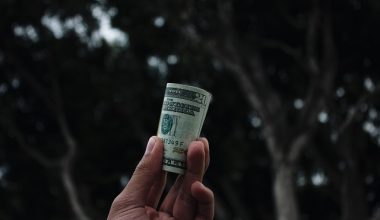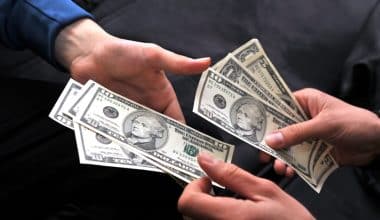Student loans come in a variety of shapes and sizes, and evaluating all of your financing alternatives might be perplexing. Higher education loans are classified into two types: federal loans from the government and private loans from financial companies.
A direct unsubsidized loan is a federal loan for undergraduate students who are still enrolled in school and require assistance with tuition and other academic expenditures. Compare the subsidized vs. unsubsidized loan requirements, eligibility, and interest rates and determine which better suits you.
What is an Unsubsidized Loan?
A student loan that is not subsidized by the federal government is known as an unsubsidized loan. On the date of disbursement, interest begins to accrue. Also, the accrued interest is capitalized and added to the loan total until repayment begins. The borrower is liable for paying the capitalized interest in full.
However, with a subsidized student loan, the government pays the interest while an eligible borrower is in school (at least half-time), during the 6-month grace period after graduation, and during periods of deferment.
Because an unsubsidized direct loan would cost you more in interest, you should pay out subsidized loans first. However, not all borrowers are eligible for subsidized loans, and the amount you can borrow is limited every academic year. Here are some things to think about before taking out an unsubsidized student loan.
What Is a Direct Unsubsidized Loan?
The interest rate, loan limit, and eligibility are the primary distinctions between a direct unsubsidized loan and a subsidized loan.
Direct unsubsidized student loans are more expensive than subsidized loans because interest begins accruing on unsubsidized loans earlier. The borrower is responsible for the interest on unsubsidized student loans that accrues during in-school and grace periods, as well as deferments and forbearances. Borrowers have the option of paying interest as it accrues or deferring payment until the student loans commence repayment. The interest rate on all federal student loans is fixed.
If the borrower does not pay the interest as it accrues, the interest will be capitalized and added to the principal loan total when the loan comes due for repayment. This can boost the loan size by up to a tenth to a quarter. It also results in interest compounding because interest is levied on the capitalized interest.
Examples of Unsubsidized Student Loans
The unsubsidized Federal Stafford Loan, the Federal Grad PLUS Loan, the Federal Parent PLUS Loan, private parent loans, and loans that consolidate and refinance these loans are all examples of direct unsubsidized loans.
Private student loans and parent loans provide borrowers with additional alternatives for making payments on student loans during the in-school and grace periods than unsubsidized federal loans. The most popular are full principal and interest deferment, interest-only payments, and immediate principal and interest payback. A little more than a quarter of private student loans have set payments per loan per month, with $25 being the most typical monthly payment amount.
During the in-school and grace periods, federal student loans allow for full deferment. On federal parent loans, immediate repayment is a possibility. Because there are no prepayment penalties on federal or private student loans, there is nothing to prevent a borrower from making interest-only or fixed payments on unsubsidized loans that do not provide these options.
Unsubsidized student loans account for roughly four-fifths of all student loans.
Eligibility for Unsubsidized Student Loan
Financial need is not required to be eligible for an unsubsidized student loan. An unsubsidized student loan will be available to more students than a subsidized student loan. Everyone, even wealthy students, may be eligible for an unsubsidized student loan.
The borrower must be enrolled at least half-time as a regular student in a degree or certificate program at a federally qualified institution or university. Some private student loans will make loans to continuing education students who are only enrolled half-time. Repayment for federal student loans and the majority of private student loans begins six months after the borrower graduates or drops below half-time attendance.
Students must have a high school diploma, GED, or the equivalent to be eligible.
The student must be a U.S. citizen or permanent resident to qualify for federal student loans. Some private student loans will lend to international students if the borrower has a creditworthy cosigner who is a US citizen or permanent resident.
The student must be in good academic standing, with at least a 2.0-grade point average (GPA) on a 4.0 scale. The student will also be on track to graduate within 150 percent of the regular timeframe.
The borrower must not have a past student loan in default.
The majority of private student loans will necessitate a credit check and a creditworthy cosigner.
Unsubsidized Student Loan Loan Limits
Unsubsidized loans have greater loan limits than subsidized loans, allowing students to borrow more money.
On an unsubsidized federal student loan, an independent undergraduate student will qualify for a greater loan maximum than a dependent undergraduate student. If their parent was refused a Federal Parent PLUS Loan owing to poor credit history, dependent undergraduate students may be eligible for the same limits as independent students.
Federal student loans have an annual loan limit every academic year as well as an aggregate loan limit. This is the maximum amount a student can borrow for their education.
How to apply for an Unsubsidized Student Loan
Even for unsubsidized loans, federal student loans require the student to have completed the Free Application for Federal Student Aid (FAFSA). To apply for a private student loan, you do not need to fill out the FAFSA.
Following the submission of the FAFSA, the financial aid office at the college will send the student a financial assistance award letter or notification. This will specify the number of federal student loans, both subsidized and unsubsidized, for which the student is eligible.
The student must complete admissions counseling at studentaid.gov and sign a Master Promissory Note (MPN). Parent borrowers must also sign an MPN.
If the student is a first-time, first-year borrower, the federal student loans may be delayed for up to 30 days.
The funds will be credited to the student’s college account and applied first to tuition and fees. The monies will also be applied to room and board if the student will be living in college-owned or operated accommodation. A credit balance will be returned to the student within 14 days to be used to pay other college expenses.
Students and parents can apply for private student loans and private parent loans on the website of the private lender.
Requirements for the Federal Unsubsidized Loan Application
Prior to getting a federal loan, students must complete the following tasks:
- Application for FAFSA
- Promissory Note (Master Promissory Note)
- Admissions advice
Current Unsubsidized Loan Interest Rates
If you get a federal student loan, you must repay the loan with interest. The interest rate is fixed for the duration of the loan.
- The current interest rate for direct unsubsidized loans for students is 4.45 percent (as of July 1, 2017).
- The current interest rate on direct unsubsidized loans for graduate or professional students is 6%. (as of July 1, 2017).
If a borrower fails to pay interest as it accrues, it is capitalized (added to the loan balance).
Maximum Loan Amount
The school determines the maximum unsubsidized loan amount, which is subject to yearly and aggregate loan limits.
Unsubsidized Loan vs Subsidized Loan
Subsidized and unsubsidized loans are federal student loans available to eligible students to assist pay for higher education at a four-year college or university, a community college, or trade, professional, or technical school. Direct Subsidized Loans and Direct Unsubsidized Loans are available to eligible students at participating schools through the U.S. Department of Education. (These loans are also known as Stafford Loans or Direct Stafford Loans by others.)
What is the Difference between Direct Subsidized Loan and Direct Unsubsidized Loans?
Direct Subsidized Loans, in brief, provide significantly better terms to assist students in financial need.
A Summary of Direct Subsidized Loans
Who is eligible for Direct Subsidized Loans?
Undergraduate students in financial need can apply for Direct Subsidized Loans.
How much money are you able to borrow?
The amount you can borrow is determined by your school, and it cannot exceed your financial necessity.
Who is going to pay the interest?
The interest on a Direct Subsidized Loan is paid by the United States Department of Education.
- while you are enrolled in school at least half-time,
- for the first six months after you graduate from high school (known as a grace period*), and
- during a time of postponement (a postponement of loan payments).
What are the Current Rates of Interest?
The chart below shows the interest rates for Direct Subsidized Loan and Direct Unsubsidized Loan disbursed on or after July 1, 2021, and before July 1, 2023.
| Undergraduate Borrowers | Graduate or Professional Borrowers |
| 3.73% | 5.28% |
| Direct Subsidized Loans and Direct Unsubsidized Loans | Direct Unsubsidized Loans |
Note: The interest rates shown above are fixed rates for the life of the loan.
Is there a Time limit for Receiving Direct Subsidized Loans?
No, if your Direct Subsidized loan’s initial disbursement is on or after July 1, 2023, there is no term limit on how long you can receive a Direct Subsidized Loan.
If you were a first-time borrower on or after July 1, 2013, and before July 1, 2023, there was a time limit on how long you could receive Direct Subsidized Loans (measured in academic years).
If you were subject to this restriction, you could not receive Direct Subsidized Loans for more than 150 percent of the reported length of the program you were enrolled in at the time. This was referred to as your “maximum eligible term.” Your maximum eligible duration was normally determined by the length of your program as stated at the time. Contacting your school will usually provide you with the published length of any previous program of study.
For example, if you were enrolled in a four-year bachelor’s degree program, you may get Direct Subsidized Loans for a maximum of six years (150 percent of four years = six years). If you were enrolled in a two-year associate degree program, you could get Direct Subsidized Loans for a maximum of three years (150 percent of two years = three years).
Is it Possible that I will lose my Eligibility for more Direct Subsidized Loans?
No, effective of July 1, 2021, you cannot lose Direct Subsidized Loan eligibility because you continue to enroll in a program after the 150 percent published length of your program has expired.
If you lost your subsidized loan eligibility owing to exceeding the 150 percent time limit, your eligibility for new subsidized loans beginning on or after July 1, 2021, is restored.
If you were a new borrower on or after July 1, 2013, and before July 1, 2021, and received Direct Subsidized Loans during your maximum eligibility period, you were no longer eligible for additional Direct Subsidized Loans. You may, however, have obtained Direct Unsubsidized Loans.
Could I ever be held liable for Interest on a Direct Subsidized Loan before it enters repayment?
As of July 1, 2021, new direct-subsidized loans will not lose their subsidy benefits before beginning repayment or during periods of deferment.
Certain types of enrollment may have led you to become responsible for the interest that accrued on your Direct Subsidized Loans when the U.S. Department of Education would normally have paid it if you were a new borrower on or after July 1, 2013, and before July 1, 2021. This was referred to as a declining interest subsidy.
If you were responsible for paying the interest on your Direct Subsidized Loans during that time period, your federal loan servicer would have alerted you.
If your Direct Subsidized Loans lost their subsidy benefits before July 1, 2021, and you have a debt larger than zero on that date, those loans will have their subsidy benefits reinstated retrospectively.
Is there a fee for this loan other than interest?
Yes, all Direct Subsidized and Direct Unsubsidized Loans have a loan cost. The loan charge is calculated as a percentage of the loan amount and is deducted proportionately from each loan payout. As indicated in the figure below, the proportion fluctuates based on when the loan is originally disbursed.
Direct Subsidized Loans and Direct Unsubsidized Loans have different loan fees.
| First Disbursement Date | Loan Fee |
| On or after Oct. 1, 2019, and before Oct. 1, 2020 | 1.059% |
| On or after Oct. 1, 2020, and before Oct. 1, 2022 | 1.057% |
Loans first disbursed prior to Oct. 1, 2019, have different loan fees.
What further Measures do I need to take to get my Loan?
If you get federal student loans as part of your financial aid package, your school will instruct you on how to take the loan.
If you are receiving a Direct Loan for the first time, you will be required to
- complete entry counseling, a tool to help you understand your loan repayment obligations; and
- Sign a loan document known as a Master Promissory Note, consenting to the loan terms
- Contact the financial aid office of the institution you intend to attend for further information on the loan application procedure.
How will I get my loan?
The school will initially apply your loan funds to your school account to pay for tuition, fees, room and board, and other school expenditures. If there are any remaining loan funds, they will be repaid to you. All loan monies must be used for educational purposes only.
Who will contact me once I have received my loan?
Your loan servicer will contact you after you have received your Direct Loan (you repay your loan to the loan servicer). Your loan servicer will keep you updated on the status of your Direct Loan as well as any new Direct Loans you obtain.
When Should You Begin Paying Off Your Unsubsidized Loans?
After you graduate or drop below half-time enrollment, you will have a six-month grace period before you must begin repaying your direct unsubsidized loan. During that time, your loan servicer will give repayment information and notify you when you must begin making payments.
You can choose from a few different repayment plans for federal student loans; you may be assigned to one automatically, but you can modify your plan at any time for free. If you are unsure about which plan is best for you, ask your loan servicer to walk you through the possibilities.
Regardless of which plan you choose, it is critical to begin repaying your student loans as soon as possible. Even though you are not obligated to pay during a grace period, interest accumulates, so attempt to pay at least the minimum interest to keep your debt from escalating.
Read Also: IRRL: Interest rates, Reductions, Refinance loans
Pay more than the minimum amount due each month whenever possible. This will cause your balance to drop faster over time. If you overpay, the loan servicer may apply it to the next month’s payment; therefore, you may need to explicitly request that it be applied to the current month’s payment.
Finally, if you have several student loans, keep track of the ones with the biggest balances and the highest interest rates. If you can pay more than the minimum, put it toward those loans first because it will help you save more money in the long run.
What Kinds of Loan Repayment Arrangements are there?
There are numerous repayment options available to fit the specific demands of borrowers. Your loan servicer can assist you in understanding your repayment alternatives. Depending on the repayment plan you select, you will typically have 10 to 25 years to repay the loan.
Graduated Repayment Plan
In comparison, the Graduated Repayment Plan begins with smaller installments and gradually increases them. This plan also includes a duration of up to ten years, but the payments are structured differently than in the Standard option, so you’ll pay extra. There are also numerous income-driven repayment programs available for students who pay with monthly payment flexibility.
Income-Based Repayment
Income-based repayment (IBR), for example, limits your payments to 10% to 15% of your monthly discretionary income and allows you to spread repayment over 20 or 25 years. Income-driven plans have the advantage of lowering your monthly cost. However, there is a catch: the longer you delay paying the loans, the more interest you will pay in total. Furthermore, if your plan allows you to have any of your loan debt forgiven, you may be required to disclose that as taxable income.
The benefit is that student loan interest is tax-deductible. You can deduct up to $2,500 in interest paid on a qualified student loan beginning in 2023, and you don’t have to itemize to take advantage of this deduction.
Deductions lower your taxable income for the year, which may reduce your tax bill or increase the size of your refund. If you paid $600 or more in student loan interest throughout the year, your loan servicer would send you Form 1098-E to use for tax purposes.
What if I am unable to repay my loan?
If you are unable to make your scheduled loan installments, please contact your loan servicer as soon as possible. Your loan servicer can assist you in understanding your options for keeping your loan current. For example, you may want to amend your repayment plan to lower your monthly payment, or you may want to request a deferment or forbearance, which allows you to temporarily cease or reduce your loan payments.
Can I cancel a loan if I realize I don’t need it or if I only need a portion of the money offered?
Yes. You may cancel all or part of your loan before it is disbursed at any time by notifying your school. You have a specific period of time after your loan has been disbursed to cancel all or part of it. The methods and time frames for canceling your loan will be explained in your promissory note and any extra information you get from your institution.
Is it possible for my loan to be forgiven or discharged?
You may be eligible to have all or a portion of your loan dismissed or forgiven if certain conditions are met.
The Pros and Cons of Unsubsidized Loan
Before you take out an unsubsidized loan, examine the pros and drawbacks.
Pros
Benefits of a direct unsubsidized student loan include:
- You are not required to show financial need. This can be useful in a variety of scenarios, such as when you’ve exhausted your borrowing limit on need-based subsidized loans but still don’t have enough to cover all of your school expenses.
- You can use these loans if you are a graduate or professional student, as opposed to subsidized loans.
- Borrowing power is greater than with a subsidized loan.
- Unlike private loans, you can select from a variety of federal repayment programs, offering you greater freedom.
- Furthermore, unlike private loans, unsubsidized federal loans (and subsidized federal loans) do not require credit checks.
However, there are several drawbacks to consider:
Cons
- Interest begins to accumulate instantly. If you or your parents are unable to make interest payments while you are in school, the accrued interest is added to the principal of your loan, increasing the cost of borrowing. As a result, you should strive to pay off all of the interest on these loans before you graduate.
- There are annual borrowing limits on federal loans, both subsidized and unsubsidized, so you may not be able to borrow as much as you need. You may be able to supplement with private loans in this instance.
Keep a close eye on your credit.
Student loans have a long-term impact on your credit, and the consequences might be either beneficial or negative depending on your choices. As you start school, it’s a good idea to keep an eye on your credit to see where it stands and how your student loans affect it.
Conclusion
Directly subsidized and unsubsidized loans can both be used to help pay for college. Just keep in mind that either sort of loan must eventually be returned, with interest. So consider how much you’ll need to borrow and which repayment option will work best for your budget.
Unsubsidized Loan FAQs
What is the interest rate on direct unsubsidized loans?
The current interest rates for Direct Subsidized and Direct Unsubsidized Loans (first disbursed on or after July 1, 2021, and before July 1, 2022) are 3.73 percent (Undergraduate Student) and 5.28 percent, respectively (Graduate or Professional Student). The interest rates are locked in for the duration of the loan.
Are unsubsidized loans private?
Private student loans might have variable or fixed interest rates that may be more or less than federal loan rates depending on your circumstances. Often, private student loans are not subsidized. In the case of an unsubsidized loan, you will be accountable for the entire loan plus interest owed.
What happens if you don’t pay off student loans?
If you do not pay your student loan within 90 days, it becomes late, and your credit score suffers as a result. After 270 days, the student loan is considered delinquent and may be turned over to a collection agency for collection.
{
“@context”: “https://schema.org”,
“@type”: “FAQPage”,
“mainEntity”: [
{
“@type”: “Question”,
“name”: “What is the interest rate on direct unsubsidized loans?”,
“acceptedAnswer”: {
“@type”: “Answer”,
“text”: “
The current interest rates for Direct Subsidized and Direct Unsubsidized Loans (first disbursed on or after July 1, 2021, and before July 1, 2022) are 3.73 percent (Undergraduate Student) and 5.28 percent, respectively (Graduate or Professional Student). The interest rates are locked in for the duration of the loan.
“
}
}
, {
“@type”: “Question”,
“name”: “Are unsubsidized loans private?”,
“acceptedAnswer”: {
“@type”: “Answer”,
“text”: “
Private student loans might have variable or fixed interest rates that may be more or cheaper than federal loan rates depending on your circumstances. Often, private student loans are not subsidized. In the case of an unsubsidized loan, you will be accountable for the entire loan of interest owed.
“
}
}
, {
“@type”: “Question”,
“name”: “What happens if you don't pay off student loans?”,
“acceptedAnswer”: {
“@type”: “Answer”,
“text”: “
If you do not pay your student loan within 90 days, it becomes late, and your credit score suffers as a result. After 270 days, the student loan is considered delinquent and may be turned over to a collection agency for collection.
“
}
}
]
}






